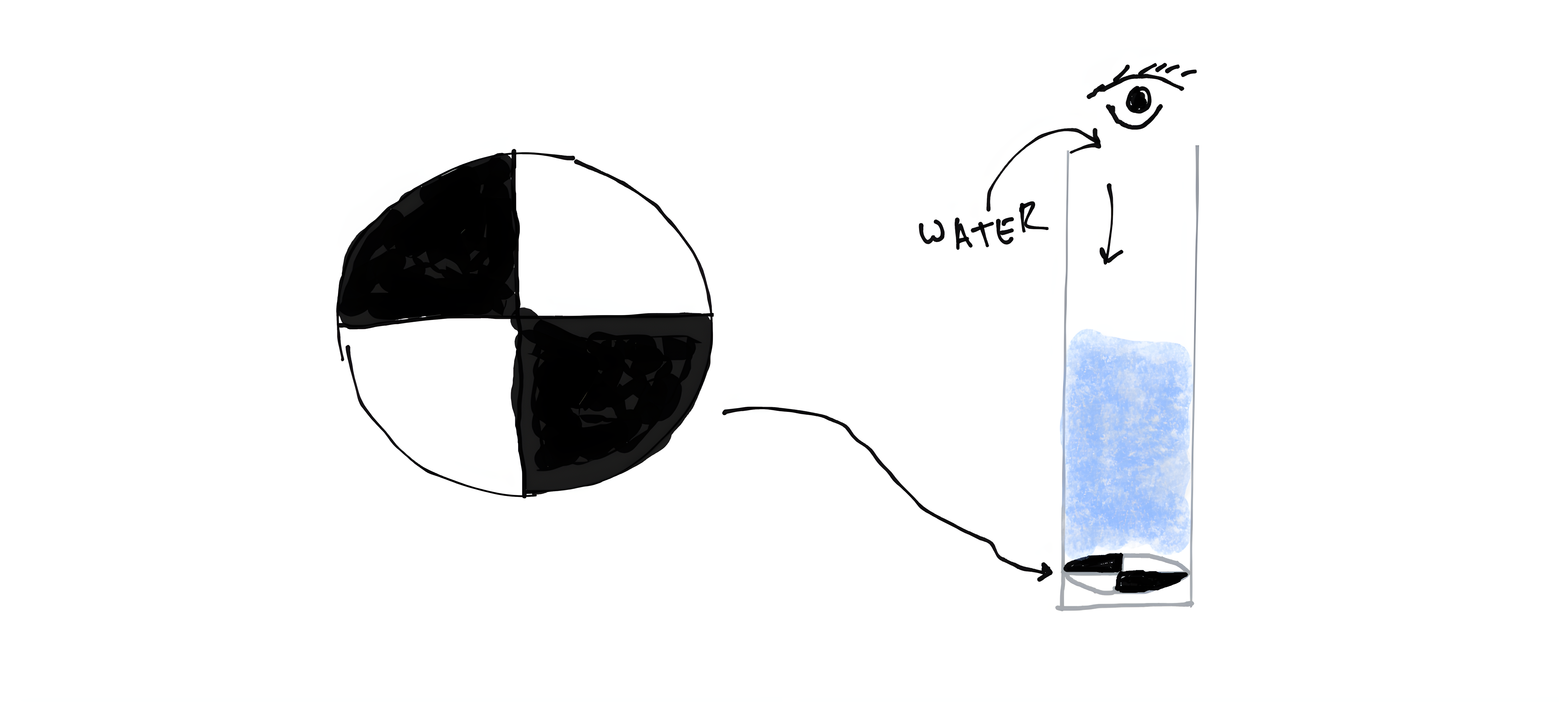Designed for – Class III-X
Time – 30 minutes
Objectives
Turbidity is one of the primary physical properties of water to look into. It simply means the cloudiness of the water. This is also one of the primary criteria for drinking water as high turbidity is possibly associated with microbial growth in the water.
Prerequisites
A brief description of nephelometry basics and different measurement techniques of turbidity would be great.
Tools required
A clean transparent cylinder made up of glass/plastics 3 feet or more in height (if the smaller size will work for dirty water); black marker pen; white paper; hard round pitch board; glue, scale and water from the different stream, pond etc.
 Methods
Methods
Cut the pitch board in a round shape (a diameter a little less than the diameter of the tube). Color with black and white in a checkered pattern, or you can print this and paste it over the cupboard from here. Use some waterproof glue to stick the pitch board disk into the bottom of the cylinder. You can use a stick to do it. Now slowly pour water by a small amount (the bubble is bad for the experiment) and try to see the disk exactly from the top. As you will add more and more water, the disc becomes hard to see. And soon there will be a time when you can’t distinguish the black and white pattern in the disk. Stop adding more water. Measure the depth of the water with a scale.
Expected results
The water should be clearer with more depth of water measured. The following conversion table can be used to get the turbidity value in NTU (Nephelometric Turbidity Unit).
Depth (cm) NTU
6.7 240
7.3 200
8.9 150
11.5 100
17.9 50
20.4 40
25.5 30
33.1 21
35.6 19
38.2 17
40.7 15
43.3 14
45.8 13
48.3 12
50.9 11
53.4 10
85.4 5
Pro-tips
Compare waters from different sources and also measure the water temperature. Is there a correlation between NTU and Temp? The higher temperature usually increases the suspended solid amount.
